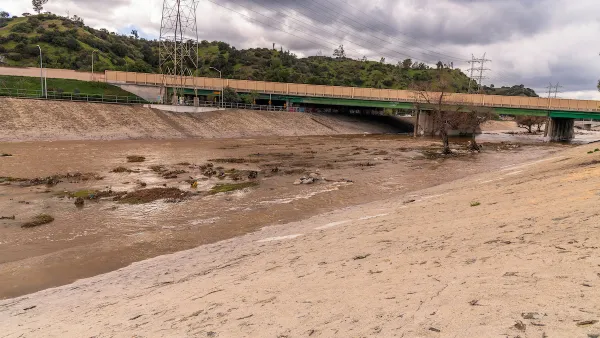The MS4 Permit was designed as a way to clean up urban stormwater runoff in Southern California. Many of the smaller cities in the region, however, are struggling to pay the bill to cover the permits costs.
Local governments and state representatives in Southern California are working "to figure out what they can do to help cities pay for a plan that could reach $20 billion over 20 years for the 88 cities in Los Angeles County," according to an article by Steve Scauzillo.
State senators Ed Hernandez, D-West Covina, and Bob Huff, R-San Dimas, recently joined "city managers, mayors, city attorneys as well as staff members from the Los Angeles Regional Water Quality Control Board" for a meeting to examine potential solutions to the funding problems cities have encountered as a result of the Municipal Separate Storm Sewer System Permit (MS4 Permit). Local governments "have voiced complaints that permits required to rid toxic chemicals and bacteria from storm water imposed staggering costs that could bankrupt smaller cities."
Scauzillo cites the example of Monrovia, which faces a price tag of $231 million for its stormwater permits. That works out to more than $1,300 per parcel in the city. Adds Scauzillo: "The cost for the small, foothill city of Bradbury is more than $60 million. Santa Clarita would pay $499 million. The city of Hawthorne would be forced to pay $193 million over 10 years."
Scauzillo includes some of the potential solutions for the problem discussed during the meeting, and more background on the environmental concerns the permit attempts to address.
FULL STORY: LA County cities have a $20 billion storm water cleanup bill but they want help

National Parks Layoffs Will Cause Communities to Lose Billions
Thousands of essential park workers were laid off this week, just before the busy spring break season.

Retro-silient?: America’s First “Eco-burb,” The Woodlands Turns 50
A master-planned community north of Houston offers lessons on green infrastructure and resilient design, but falls short of its founder’s lofty affordability and walkability goals.

Delivering for America Plan Will Downgrade Mail Service in at Least 49.5 Percent of Zip Codes
Republican and Democrat lawmakers criticize the plan for its disproportionate negative impact on rural communities.

Test News Post 1
This is a summary

Test News Headline 46
Test for the image on the front page.

Balancing Bombs and Butterflies: How the National Guard Protects a Rare Species
The National Guard at Fort Indiantown Gap uses GIS technology and land management strategies to balance military training with conservation efforts, ensuring the survival of the rare eastern regal fritillary butterfly.
Urban Design for Planners 1: Software Tools
This six-course series explores essential urban design concepts using open source software and equips planners with the tools they need to participate fully in the urban design process.
Planning for Universal Design
Learn the tools for implementing Universal Design in planning regulations.
EMC Planning Group, Inc.
Planetizen
Planetizen
Mpact (formerly Rail~Volution)
Great Falls Development Authority, Inc.
HUDs Office of Policy Development and Research
NYU Wagner Graduate School of Public Service





























